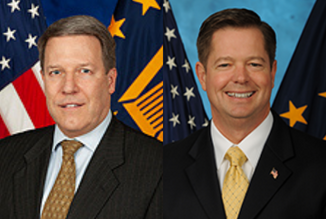
Human-centered design at the heart of VA’s CX initiatives
Improving customer experience is a top priority for the Department of Veterans Affairs. The department has been concentrating on improving service to its consti...
Improving customer experience is a top priority for the Department of Veterans Affairs. The department has been concentrating on improving service to its constituents: veterans. Last year, President Joe Biden signed an executive order on transforming customer service governmentwide in an effort to rebuild the public’s trust in the federal government. VA has been using a design philosophy called human-centered design to inform many of their customer experience decisions.
“I can tell you that over the last number of years, we’ve had tremendous growth and tremendous interest in continuing to build this capability across the department,” said Barbara Morton, the Department of Veterans Affairs’ deputy chief veterans experience officer during an interview with Federal Monthly Insights – Customer Experience. “I think having a transition in administration, we certainly had great support under the last administration. And over the last year, we wanted to make sure that we can highlight how important CX is to VA, to veterans and their families, caregivers and survivors. And this administration, our current secretary has shown incredible support as well.”
Trust is the most important metric for the VA when determining how well they are servicing veterans. Since 2015, that was their “North Star,” said Morton. In 2016, when the department measured a baseline, only about 55% of respondents to the survey agreed with the statement, “Do you trust VA to fulfill this country’s commitment to veterans?”
“Which meant we had a far, far, far way to go, long way to go,” Morton said in an interview with Federal News Network reporter Jory Heckman. “And today, our trust measures have increased by over 20%. So we’re at 78[%], I believe is the most recent percentage, which is really proof positive that when you invest in and direct resources to and have leadership support, and priority in this area, you actually can institute programs on the ground level, to improve that sense of trust and experience with veterans over time. It certainly is not something that happens overnight; I would say that it’s a journey. It’s a build. And we’re always aiming high, we want to reach at least a 90% trust agreement. And we’re hoping that with the efforts underway, in the next number of years, we’ll be able to reach that goal at some point.”
Morton said that the digital experience is a major part of the department’s customer experience work. And the way they are improving the digital experience is by applying human-centered design on their website and mobile app. So far, responses to changes made under this philosophy have garnered positive feedback on the App Store, according to Morton.
Another area of improvement in the digital space for VA has been with their website, and the recent adoption of a “no wrong door” approach for navigation. With so many different websites to transact with different parts of the department, users were easily confused as to where they should go to access certain information. Morton said that, again, using human-centered design, they determined that the best catchall domain for all Department of Veterans Affairs websites should be VA.gov.
“The other thing that I think is also fascinating, too, is that we didn’t stop with the migration of these websites under the banner of that front door of VA.gov,” Morton said. “We also wanted to refresh the website. So it didn’t look and feel designed from the inside, right. So, prior to 2018, VA.gov looked incredibly bureaucratic. And I say that with love in my heart, because I love the bureaucracy, but it was not functioning for veterans; it was really more about VA kind of showcasing certain things, that it was important to the organization.”
The rework of the site led to what is running today. Morton said it is “a much more intuitive, user friendly web design and web page.”
Customer experience improvements at the Department of Veterans Affairs don’t end online. The Biden administration’s diversity, equity and inclusion mandates also tie in to customer experience at VA. Again, human-centered design was a key component of achieving DEI goals. They have two efforts underway now.
“One of them is with the Pacific Islander community, veteran community, doing a human-centered design, first ever human-centered design research sprint with that population to really understand, again, how they engage with VA, how might they engage with VA, and really thinking about how we might prototype and test solutions with that group,” Morton said.
VA has also completed a tribal veterans research sprint, with similar goals.
One method of outreach Morton detailed are Veterans Experience Action Centers. These are events that can be set up virtually or in-person and connect veterans with resources from all across VA.
“So you’ve got benefits represented: health care, memorial services, Board of Veterans Appeals. It’s sort of a one stop shop for veterans who have questions issues across VA. So it’s not just benefits, it’s not just healthcare, it’s sort of all in one.”
Copyright © 2024 Federal News Network. All rights reserved. This website is not intended for users located within the European Economic Area.
Robert O’Shaughnessy is a digital editor of Federal News Network.
Follow @rposhaughnessy
Related Stories

Veterans Affairs takes a new step towards improving customer experience




